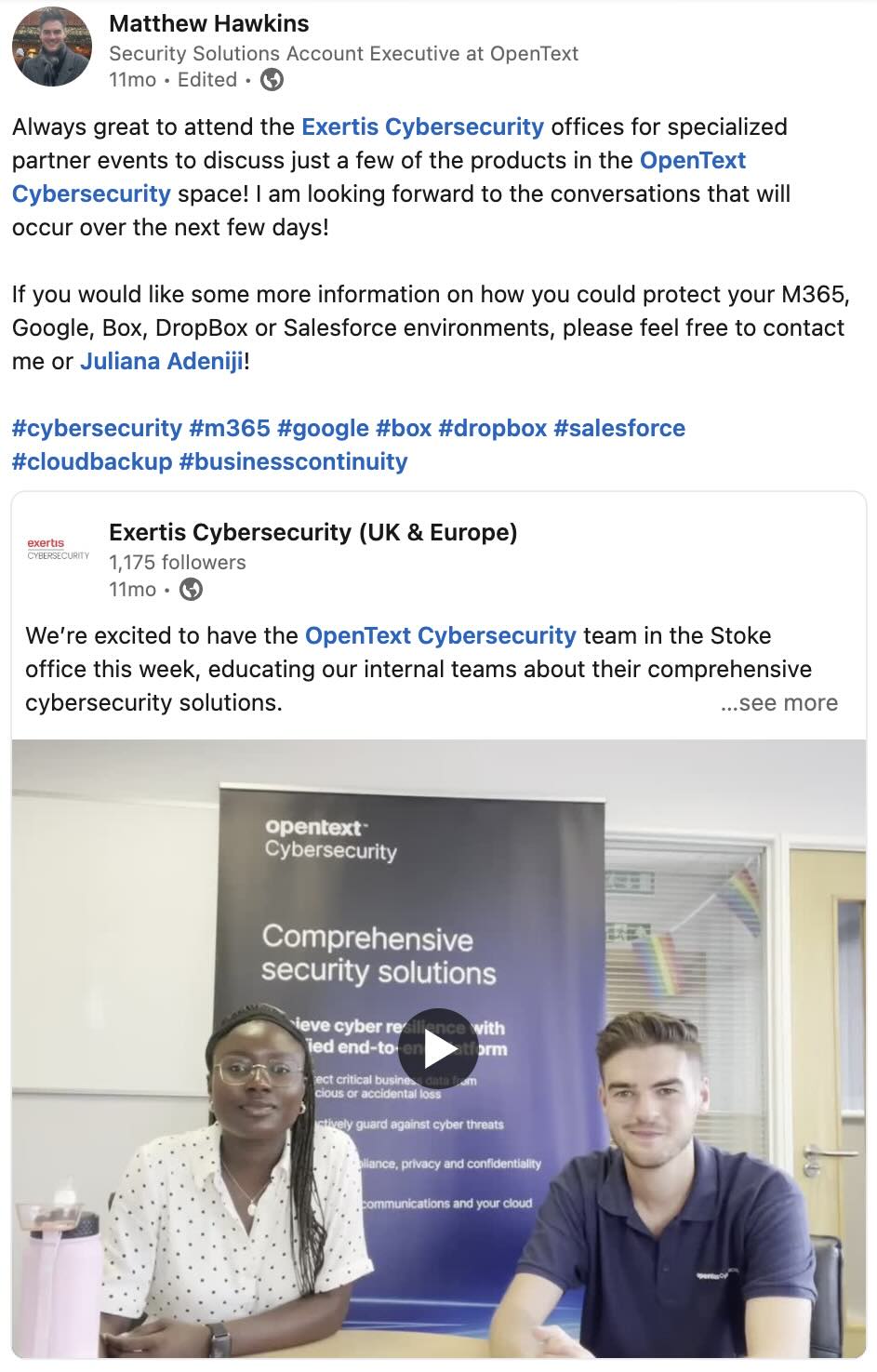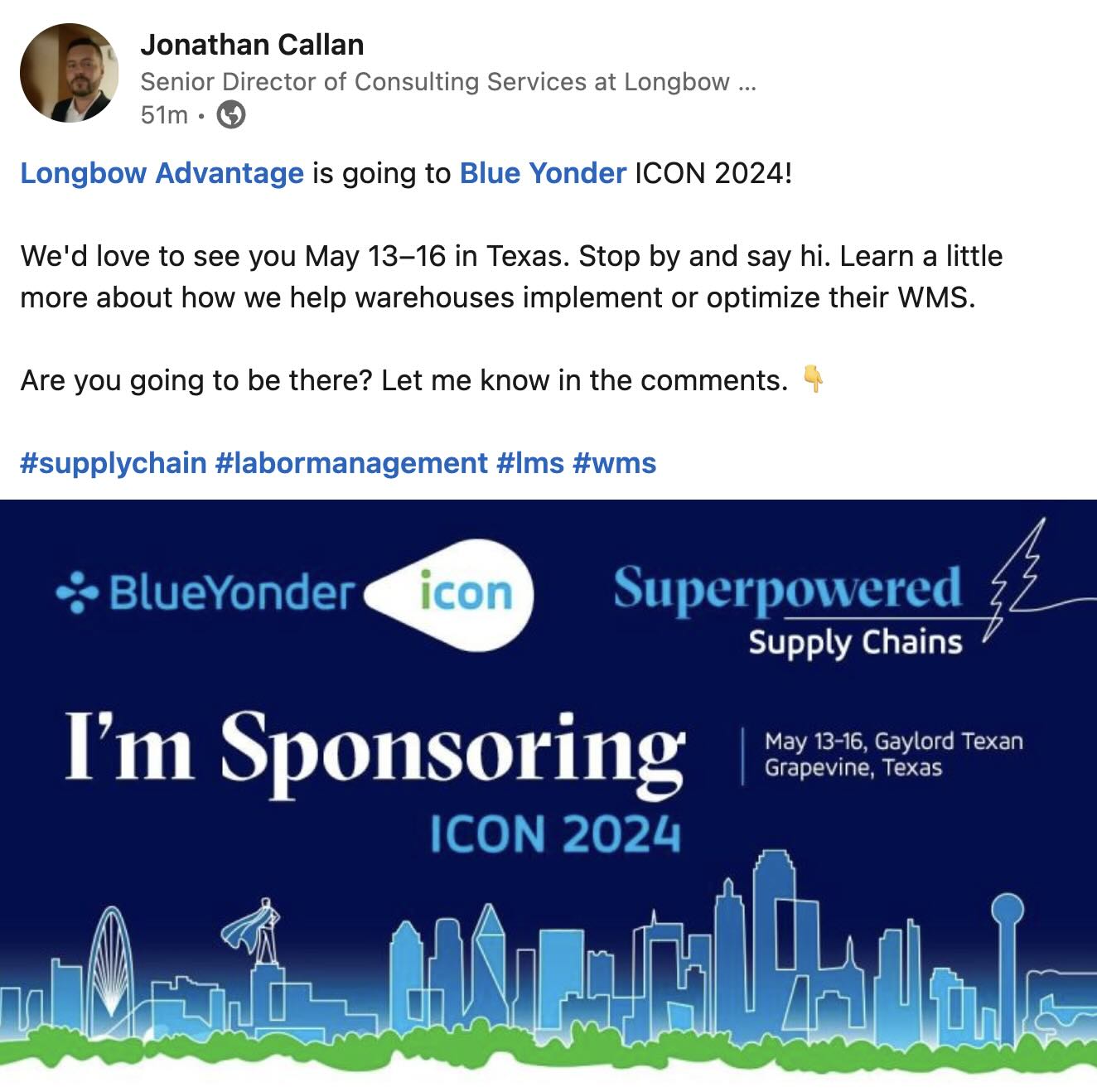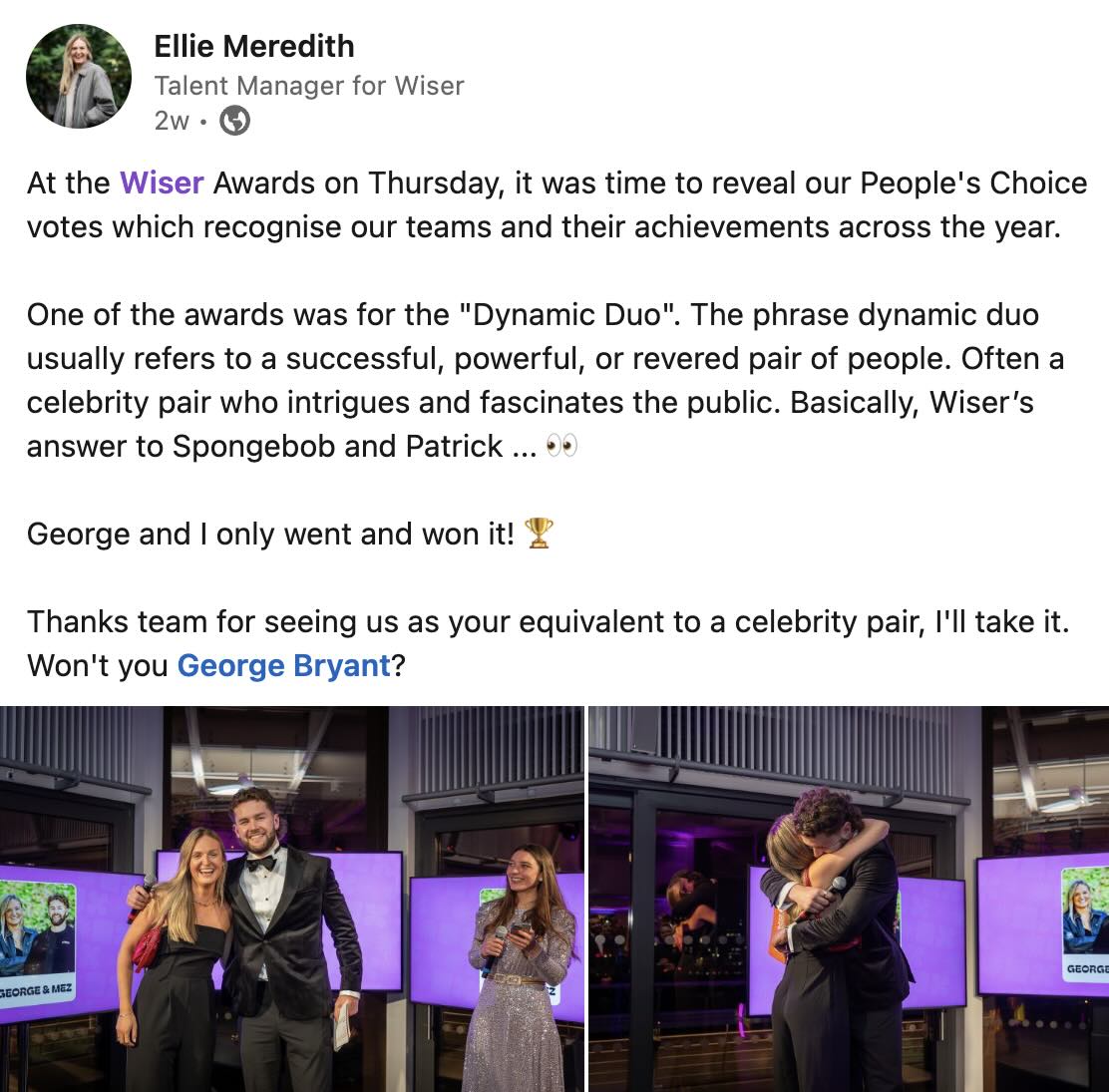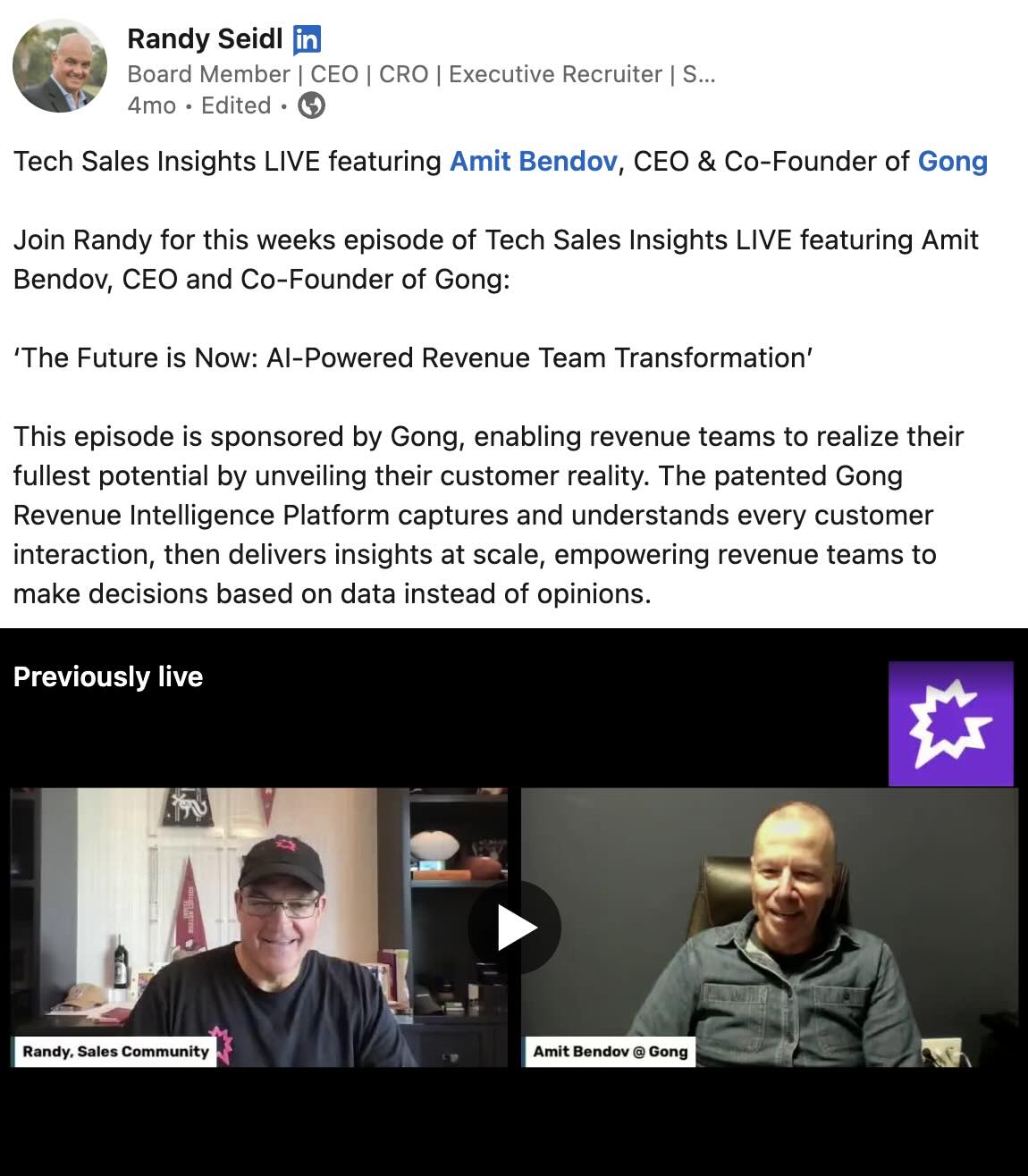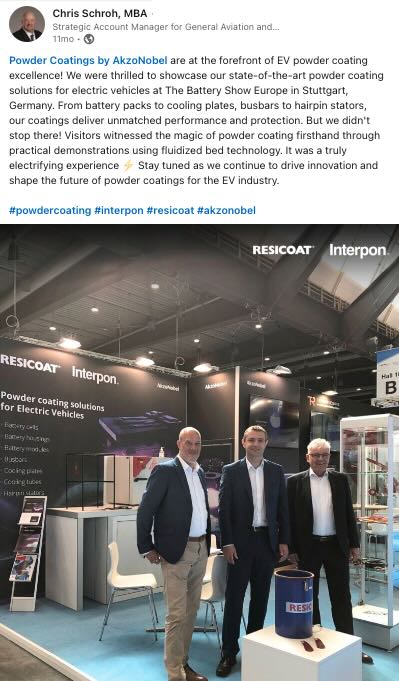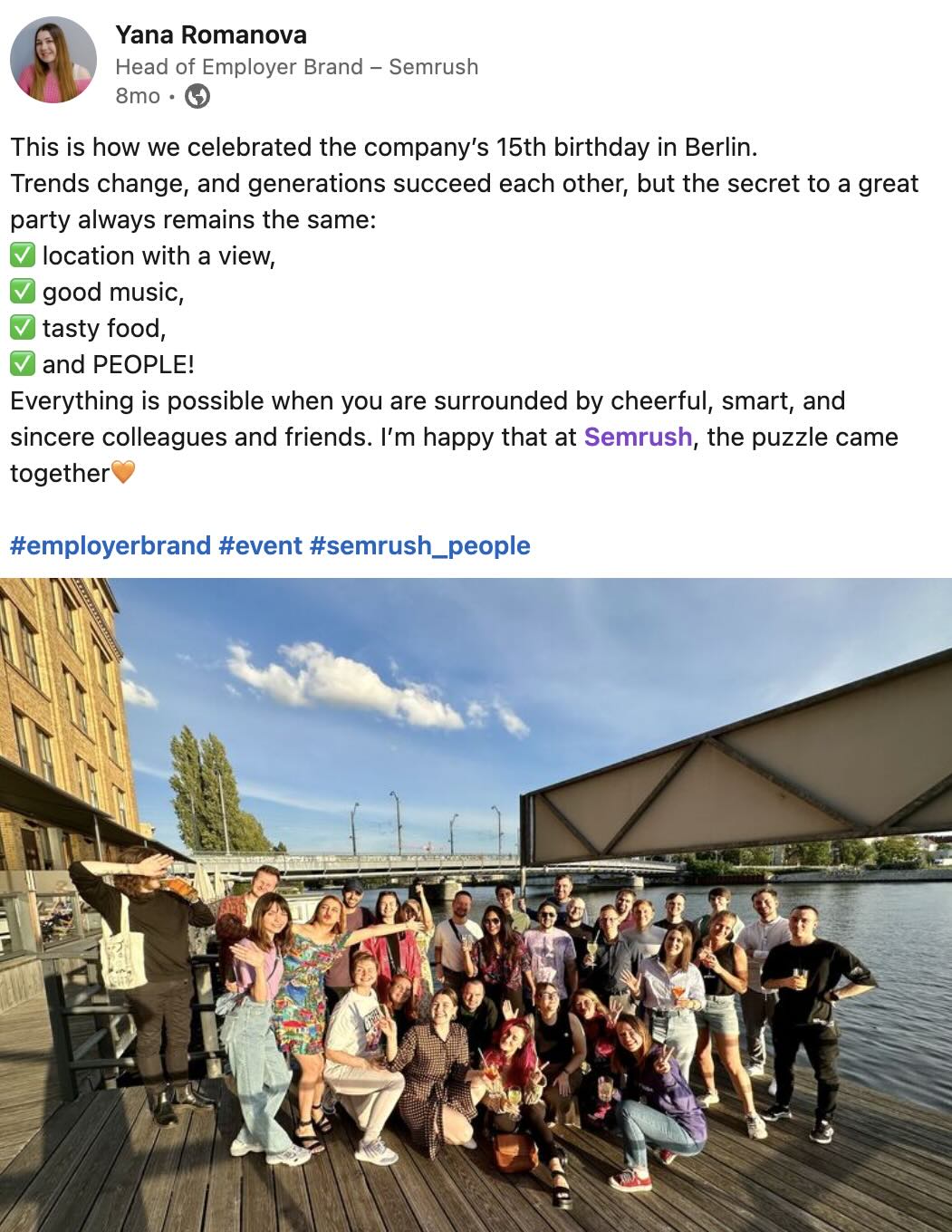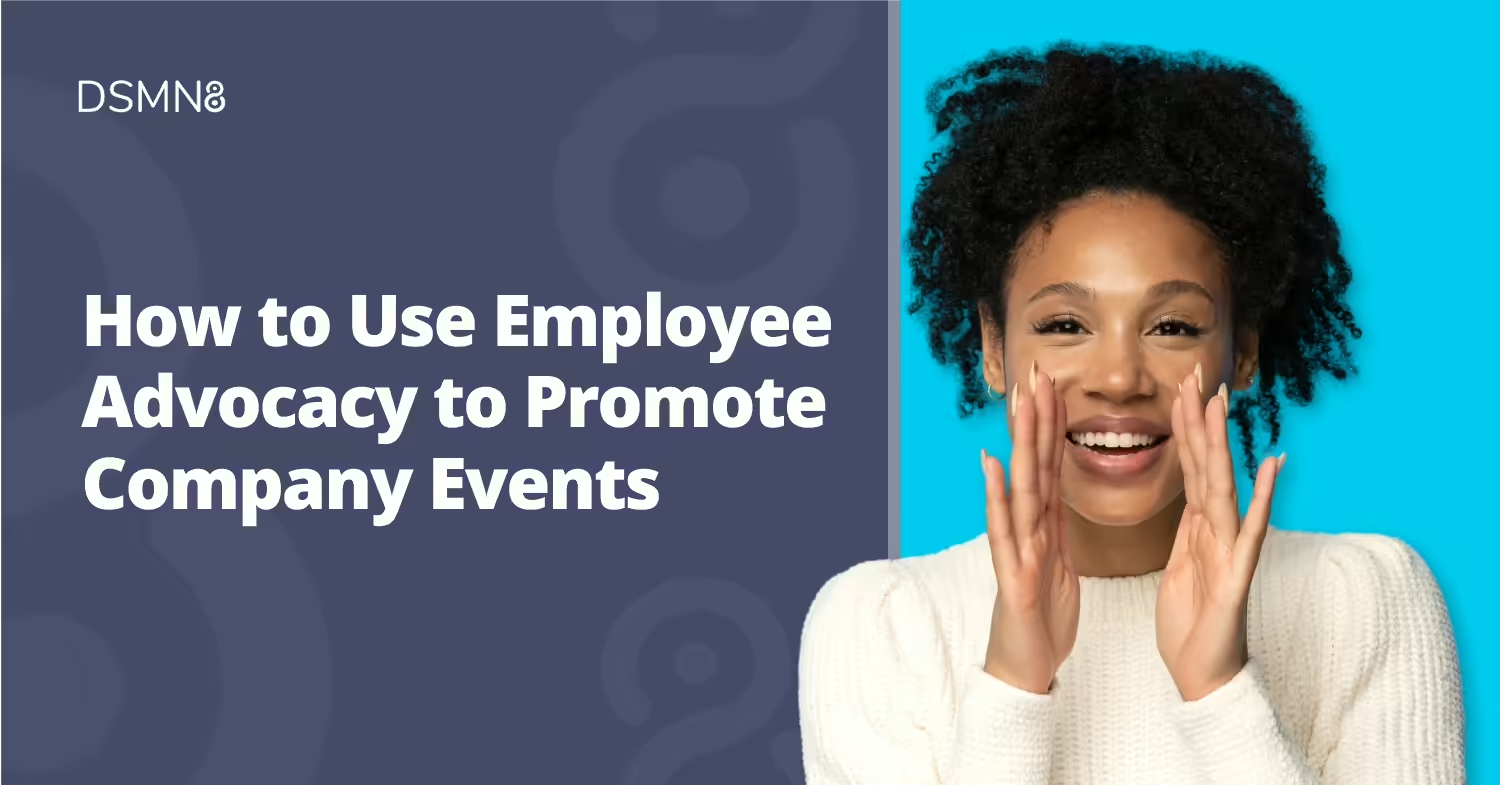
In a world where connections matter more than ever, tapping into the enthusiasm of your own team can work wonders for spreading the word about your company events.
It’s not just about filling seats; it’s about fostering genuine excitement, building relationships, and showing the human side of your brand.
We’ll uncover 5 key reasons to consider employee advocacy for events promotion, which events employees should share, best practices, and share LinkedIn post examples from organizations leveraging employee networks.
Why Use Employee Advocacy to Promote Company Events
Before diving into the how and sharing some good examples for inspiration, we need to understand the why.
Here are five reasons why employee advocates can promote company events in a way that feels less like advertising and more like a community coming together 👇
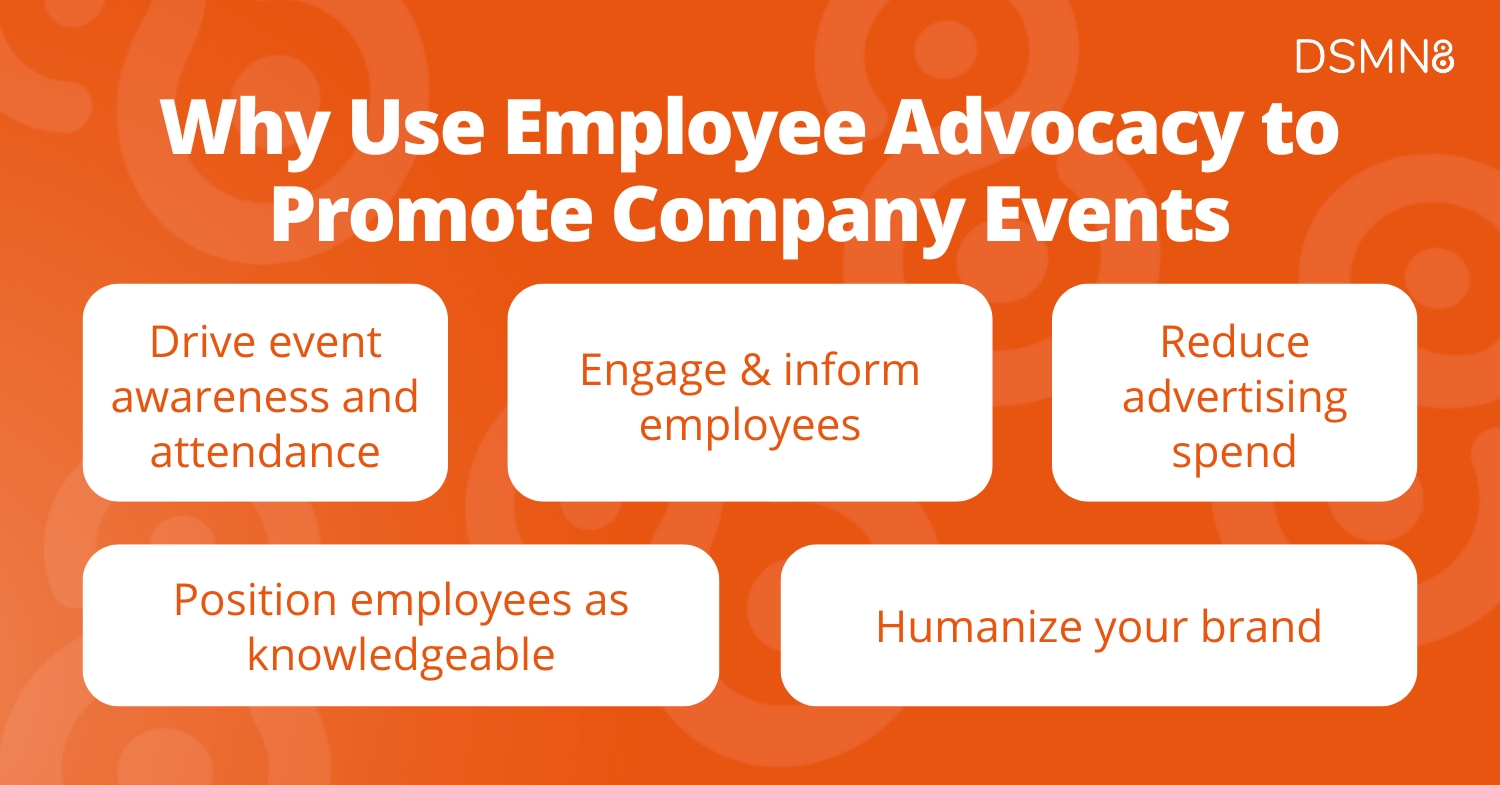
1. Drive event awareness and attendance
72% of people trust content shared by people rather than brands.
People trust people, and your employees have networks filled with people you want at your events.
An event recommendation from someone they know and trust on LinkedIn will be much more enticing than a marketing email or advertisement. It’s just human nature!
As well as ensuring that your current clients, partners, and customers are aware of the event, you’ll be able to attract a new audience too.
Your team will have a varied network, including previous colleagues, industry thought leaders and decision-makers. Plus, social media algorithms are always more likely to push content by individuals than brands!
2. Reduce promotional spend
As mentioned in the point above, social media algorithms simply don’t prioritize content from brand channels. It makes sense – platforms want brands to pay for advertising.
More than ever, organic social media reach is declining for businesses, and the cost of advertising is increasing.
Meta is charging for verification, and X took it a step further with Blue for Business. Just recently, LinkedIn started testing a premium plan for company pages.
Getting employees to build personal brands and share content is a way thousands of organizations are now navigating the social media space.
This reduces dependence on ever-increasing advertising costs, third-party PR, and sponsorships.
3. Engage & inform employees
Employees often find themselves overwhelmed with notifications and emails, making it difficult to stay updated with company news.
Yet people want to feel connected with their organization, especially leadership teams. How can you cut through the noise?
In 2024, LinkedIn is the place your team keeps up with your executives. 79% of professionals would prefer to work for an organization whose CEO is active on social media.
So if there’s a key event coming up, get your C-Suite to share it on LinkedIn! You’ll engage and inform employees, while making them feel more connected to company leaders.
4. Position employees as knowledgeable
When employees share events they’re attending or photos after events, they’re indicating several positive things about themselves and your organization:
- They’re well-connected with those in their industry.
- They’re knowledgeable about recent developments in their area of expertise.
- Your organization values events and encourages employees to build their networks.
This helps to position your employees as thought leaders, and your company as relevant and trustworthy.
5. Humanize your brand
Personalized marketing is a huge trend in 2024, in both B2B and B2C sectors.
Hubspot’s 2024 State of Marketing report revealed that 75% of marketers believe personalized experiences drive sales and repeat business.
And according to research by Salesforce, 73% of customers expect better personalization as technology advances.
What better way to take a personalized approach than employees sharing content with their own networks?
Encouraging your team to foster relationships on LinkedIn helps build trust in your brand, while attracting talent to your organization.
3 Types of Events to Promote With Employee Advocacy
Employee networks can boost awareness and attendance for all kinds of company and industry events. Here are the 3 main types to consider encouraging employees to share:

1. In-person events
After cancelling in-person events over the pandemic, organizations are eager to get back to face-to-face networking. And younger professionals who haven’t had the opportunity to attend industry events at the start of their careers are keen to participate.
This is the perfect opportunity for your employees to deepen the relationships they’ve built on LinkedIn by connecting in person!
Attendee numbers will naturally increase, as people are more interested in going to an industry event if they already know someone attending. Encourage your team to bring virtual business cards to these events to help facilitate connections and leave a lasting impression.
2. Online events
While in-person events are back, online events are still thriving, reaching a larger and more diverse audience than ever before.
Employees can encourage sign-ups for digital events like webinars or live streaming sessions. Salespeople in particular will benefit from this, by providing value to prospects in their network looking to learn more about your solution.
3. Internal events
Finally, internal events.
Company charity days, awards ceremonies, and team-building awaydays.
Though the focus here isn’t to build awareness or sign-ups from an external audience, employees sharing content about them is still valuable.
Showcasing company culture on social media is a key element of employer branding, to attract top talent to your organization.
Candidates use social media to find out about a company and its culture before applying for a role. And this type of content is more trustworthy when it comes from an employee than the company itself.
It impacts sales too. Consumers are seeking out brands that share the same values as them, so demonstrating that your organization contributes to society through volunteering or environmental days makes a huge difference.
How to Leverage Employee Advocacy for Promoting Company Events
It’s not as simple as just asking your team to share content about company events on LinkedIn. To really leverage the influence employees have on social media, you’ll need to take a strategic approach.
I’ll break this down into the 3 key stages: which employees to invite, what they’ll need, and what to do during and after the event.
For more depth, our guide to being a great employee advocacy program manager will come in handy. You can also enroll in the free Employee Advocacy Certification course to get the fundamentals in place.
Step 1: Which Employees?
While you can invite everyone in your organization, if employee advocacy is a new initiative for you, focus on those who will gain the most from participating and drive the best results.
Following our ideal advocate profiles worksheet will help you identify individuals in your organization best suited to an advocacy program.
When it comes to promoting events in general, your key advocates will be the employees attending the event, senior leadership, sales, marketing and PR.
For driving awareness of in-person events, get those who live in the area involved, as their networks are more likely to include local people.
After events, your talent or employer branding team will be keen to share content that shares your company culture with potential recruits.
Step 2: Provide Content for Sharing
The most important part is to provide employees with content to share.
They’ll need images, a link to sign up to the event (if applicable), and the key event information: what, where, and when.
Encouraging your team to write their own posts is the most authentic approach, but many employees (especially leadership teams) find themselves too busy to get involved.
To reduce this friction, write suggested copy for employees as a starting point. At DSMN8, we recommend providing 5 variations to prevent your team sharing identical content.
Avoid taking a one-size-fits-all approach, and don’t use a corporate tone that sounds like company page content.
Step 3: Collect Employee-Generated Content
Encourage your team to take photos at company events, awards shows and conferences they attend. Make sure they’re aware that you’d like them to do this before the day comes!
Collect this content via a company hashtag, your internal comms software, or employee advocacy platform.
Ensure employees know that they’re agreeing for the company to use this content in future. If you’re using an advocacy platform, usage rights will be automatically transferred.
Employee-generated content can be re-shared on brand channels, repurposed for promoting future events, and used for talent acquisition.
Authentic employee content is unparalleled when it comes to recruiting top talent, as candidates want to see what it’s like to work for your organization.
Examples of Employees Promoting Events on LinkedIn
Let’s jump into some good examples for each type of event!
Below are several examples of employees promoting company events on LinkedIn, from a variety of industries.
Click on the images to bring up larger versions.
1. OpenText
This LinkedIn post by Matthew from OpenText is a great example of how a salesperson can leverage industry events to generate leads and position themselves as experts on social media.
The video clip features himself and his colleague sitting at their booth at the event. The banner behind them is clear to read without clicking play on the video, immediately letting the viewer know that OpenText offers Cybersecurity solutions.
Matthew tagged OpenText, the company who hosted the event, and his colleague. This boosts visibility and engagement by sharing the post across networks.
He finishes his post with a CTA encouraging people to get in touch.
2. Longbow
In this LinkedIn post, Jonathan from Longbow Advantage promotes an upcoming event that his organization is sponsoring.
With concise copy, he shares the key information someone would need to know: when and where the event is, and what it’s about.
As a Senior Director, Jonathan is an ideal employee to share this event post, as he’ll be connected with decision-makers in his industry.
4. Gong
This one is slightly different, showing another way individuals can play a role in promoting company events.
Randy, host of Tech Sales Insights Live, shared this post promoting a live online event featuring a partner of his: Gong.
Partnerships and sponsorships expand the visibility of your content through leveraging additional networks.
5. Dropbox
A double-whammy of employee advocacy here from Dropbox!
Amanda shared an ‘Impact Day’ photo featuring rescue dogs, then Masha re-shared with commentary about how Dropbox gives back to the community by providing paid volunteering days.
This demonstration of corporate-social responsibility, charity and company culture helps to attract talent.
How Dropbox launched their employee advocacy program with DSMN8.
6. AkzoNobel
This post by Chris from AkzoNobel is a great example of how you can use content from events for product marketing.
Sharing a photo from the event, Chris explains what the product is – powder coating solution for electric vehicles, and lets readers know that live demonstrations took place at the event.
This is a way to drive demand for the product, show that AkzoNobel are networking with industry peers, and generate interest in their future events.
Find out how AkzoNobel achieved $100,000 in comparative media spend with DSMN8.
7. Semrush
This post by Yana from Semrush shares a company event celebrating the 15th anniversary of their company with her external network on LinkedIn.
As Head of Employer Branding, Yana is keen to showcase company culture and positive experiences to attract candidates who will fit in with the team.
Using a company hashtag (#semrush_people) is also a great way for social media managers to monitor and collect employee-generated content for repurposing.
How an Employee Advocacy Platform Supports Events Marketing
Promoting events through employee advocacy can be managed manually, by sharing pre-written copy, key info about the events, and photos/graphics with employees.
However, to make it easy for employees to get involved (and your marketing / comms team to manage), an employee advocacy platform like DSMN8 streamlines the process and ensures your program runs smoothly.
I won’t go into the full capabilities of DSMN8 here as we’re talking specifically about events, so here are the top 5 ways the platform supports events promotion:
Additional Resources
Emily Neal
SEO and Content Specialist at DSMN8. Emily has 10 years experience blogging, and is a pro at Pinterest Marketing, reaching 1 million monthly views. She’s all about empowering employees to grow their personal brands and become influencers.

